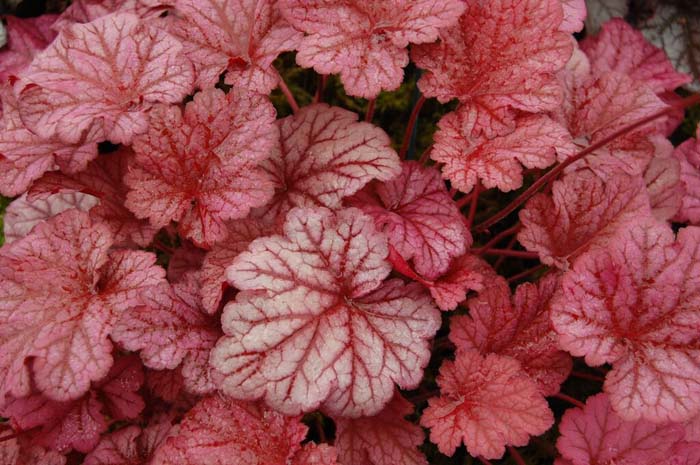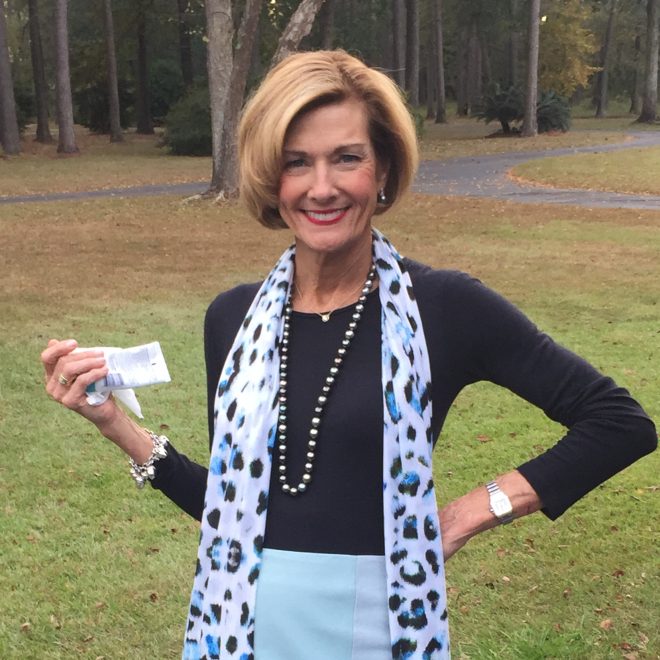December Yarden 2023
Published 1:28 pm Thursday, November 30, 2023

- COLOR ME RED: Heucheras are colorful at this time of year. They should be planted in partial shade and mulched well to protect their roots.
Sponsored by the Thomasville Garden Club
DECEMBER WEATHER
Trending
Weatherspark.com says that Thomasville’s “cool season” begins on December 1. Typically, December 1 is also the longest day of the month, as well, with 10 hours and 18 minutes of daylight, and it is the clearest day of winter, with clear, partly clear or partly cloudy conditions 60% of the time. However, around December 19, the “cloudier part of the year” begins.
The shortest day of the year 2023 is December 21, with the Northern Hemisphere receiving about 7 hours and 14 minutes of daylight. Overall, December is the darkest month of the year.
December is one of the 3 most humid months of the year, with an average relative humidity of 78%. The chance of a wet day in December increases gradually throughout the month from 24% to 26%. Rain falls for an average of 8.8 days, with an average of up to 1.57 inches of accumulation.
According to www.weather-us.com, our average high temperature in December is 62.8⁰ and our average low is 46.8⁰. Weatherspark says that we will “almost certainly” receive frost between December 10 and February 13.
SIGNIFICANT DECEMBER “YARDEN” DATES
Thursday, December 21 – the winter solstice occurs in our hemisphere. This date marks the shortest day (and the longest night) of the year. Because the Earth is tilted on its axis, the sun’s arc rises and falls throughout the year as the Earth’s poles point either towards or away from the sun. The winter solstice in the northern hemisphere occurs when our North Pole reaches its maximum tilt away from the sun; thereby, the sun is at its lowest in the sky. (On this date, the South Pole is pointing towards the sun and the southern hemisphere is experiencing its longest day and shortest night, and it is summertime.) In our time zone, the exact time of the winter solstice will be 10:27 pm.
Trending
COLORFUL DECEMBER
We are blessed to have colorful yardens in December, while many parts of our country are experiencing white, or even gray, environments and landscapes. Our lovely winter-flowering Camellia Japonicas are in bloom (and our Sasanquas are often still flowering). I hope you have them in your own yarden. If not, you are missing a wonderful winter treat for the eyes and spirit. A term that describes Japonicas perfectly is “Elegance in Bloom.” There are thousands of cultivars with a large variety of blossom forms, sizes and colors. I have absolutely no doubt that there are several that will stun and delight you, so I hope you will add at least one, if you do not have any yet. Not only are the blossoms fabulous but the plants are evergreen and require minimal care. I urge you to look around; Thomasville is home to over 70 registered camellias, many of which can be seen gracing yardens throughout our area.
Also performing this month are flowering cabbage and kale, dianthus, heucheras, pansies, petunias and snapdragons. Tea olive trees and banana shrubs add a nice perfume to winter yardens.
The decorative berries of ardisia, nandina, pyracantha, and numerous hollies brighten our landscapes and our homes, too, when cut and brought indoors as part of our holiday décor.
During the hustle and bustle of the holiday season, take time to slow down, unwind, walk through, look at, appreciate and be refreshed by the extraordinary beauty of our South Georgia winter.
DECEMBER IN THE YARDEN
Do NOT prune spring-flowering plants such as azalea, dogwood, forsythia, redbud and rhododendron. They set flower buds in the fall, so pruning during the fall or winter months eliminates or decreases their spring flower display.
Summer-blooming plants form flower buds on new growth and pruning them during the winter is fine; it will not affect their flowering. Examples of this type of plant include crape myrtle and abelia.
DO prune your evergreen shrubbery and bring the cuttings indoors. Juniper, holly and magnolia foliage is quite decorative. Use holly and nandina berries for a red accent in arrangements and centerpieces.
For their health and appearance, prune short stubs and dead limbs from trees when all the leaves are gone and you can see what you need to do.
Plant heucheras, also called coral bells and alum root, in partial shade; mulch well to protect roots; and cut back the flower stalks in the fall in order to permit energy to be directed to the production of their vibrant leaves. You will love their large, beautiful, colorful, heart-shaped or rounded foliage. Other big pluses are that they are native, low maintenance, evergreen or semi-evergreen, cold hardy in zones 4 to 9 as well as tolerant of our heat and humidity. They are shade perennials that bring year-round interest to the yarden as specimen plants, as edging, planted in masses or in containers.
Plant woody vines like Carolina jessamine and cross vine now. Cross vine has the great ability to climb up different surfaces; therefore, this native plant would be perfect if you are looking for something to add to a trellis or fence. It grows best in a full sun and moist but well-drained soil.
Thoroughly mulch azaleas, rhododendrons, camellias, and laurel for protection in case of freezes. They prefer acidic materials, such as oak leaves and pine needles, but any mixed, dry leaves will work, if oak and pine are not available.
I mention this frequently, but because I continue to see it, even in my own neighborhood (!), I will continue to remind everyone to keep mulch away from tree trunks! Unbelievably, even some professional landscapers pile it high, like a pyramid, directly against the trunks. This can cause roots to grow up and into the mulch, creating stem-girdling roots which can kill trees. Mulch can also cause decay and dead spots on the lower trunk and major roots. Decay in this portion of the tree can cause instability and death.
Keep trees and shrubs you planted this fall watered. Evergreen plants in particular need regular watering, even in cold weather. Apply 1 gallon per foot of height.
To help pansies, snapdragons and ornamental kale and cabbage grow and bloom in cold soil, use a fertilizer that contains nitrate nitrogen.
Houseplants do not need many nutrients in the winter. If you use houseplant fertilizer, use it at half strength. Don’t water your houseplants until the soil feels dry at an inch’s depth.
If you plan to be away during the holidays, provide your house plants with extra humidity by grouping them together in leak-proof trays filled with moistened pebbles or setting them in a damp shower or bathtub.
Keep raking the fallen leaves from your lawn or mulch them with your lawn mower. Mowing over a light layer of leaves and thereby returning the foliage to the soil is called ‘mulching in place.’ The chopped-up leaves are carbon-rich and when they decompose they will actually improve your lawn by providing free fertilizer.
You can rake leaves directly into garden beds and scatter them around the roots and stems of plants, about three to five inches deep. You can also rake them into a compost pile and let them decompose over the course of the year. The leaf mulch can then be applied to lawns or garden beds. If you leave piles of wet, matted leaves on your lawn, big dead spots will result.
CHRISTMAS GIFTS FROM THE YARDEN
Herbs. A container filled with an herb or a mix of herbs makes a wonderful Christmas treat for anyone — neighbors, teachers, hostesses, etc, or interest a child in gardening with a pot of rosemary or mint.
Make a container from a Christmas mug or fill a decorative basket and come up with an herb theme.
- Biblical herbs – chervil, coriander, cumin, myrtle;
- Herbs for teas – chamomile, lemon verbena, mints, pineapple sage;
- Herbs for cooking – basil, garlic, oregano, parsley;
- Herbs with antioxidant powers: research into disease-fighting culinary herbs suggests dill, oregano, peppermint, rosemary, thyme;
- Herbs for healing – arnica, Echinacea, ginger, hyssop;
- Herbs for a soaking bath (think “spa day”) – jasmine, lavender, peppermint, rosemary;
- For a cat-lover, add a pot of catnip to a basket of toys and treats.
Easy-care houseplants
- Small peperomia – variegated white and green plant is especially pretty.
- Silver nerve~plant (fittonia) – works well in terrariums, too.
- Chinese evergreen – one of the most durable houseplants.
- ZZ plant (Zamioculcas, zamiifolia) – 12 inches tall but grows slowly
- Sansevieria (snake plant) – can grow quite tall; very hardy and striking-looking.
DECEMBER QUOTE
“You need to see bare branches to know the full astonishing shock of the new leaves come next April.” ~ Monty Don (British broadcaster, writer, and gardener with a vast career in television. Although he has experience in a variety of topics, he is a committed organic gardener.)
I wish you, my dear readers, all the joys, love and blessings of the season, and I pray for peace and goodwill to reign over all the Earth,
Pat
Pat Pankey writes this column for Thomasville Garden Club, Inc. as a service to the community. Thomasville Garden Club, Inc. welcomes new members. If you are interested, please contact Membership Chair Vicky Johnson at 224-0590 or any current member. The Garden Center has a library of books about gardening that are available not only to garden club members but also to the general public. To access the library or to visit the Garden Center, please contact Mary Tomlinson at 229-406-6046 or any current member. You may contact Joe Tarver, 904-613-4204 if you are interested in renting the Garden Center for an event. The Garden Center is always open to the public on the Wednesday before the first Friday of every month, September through May. Please visit our website at www.thomasvillegardenclub.org and find us on Facebook.





